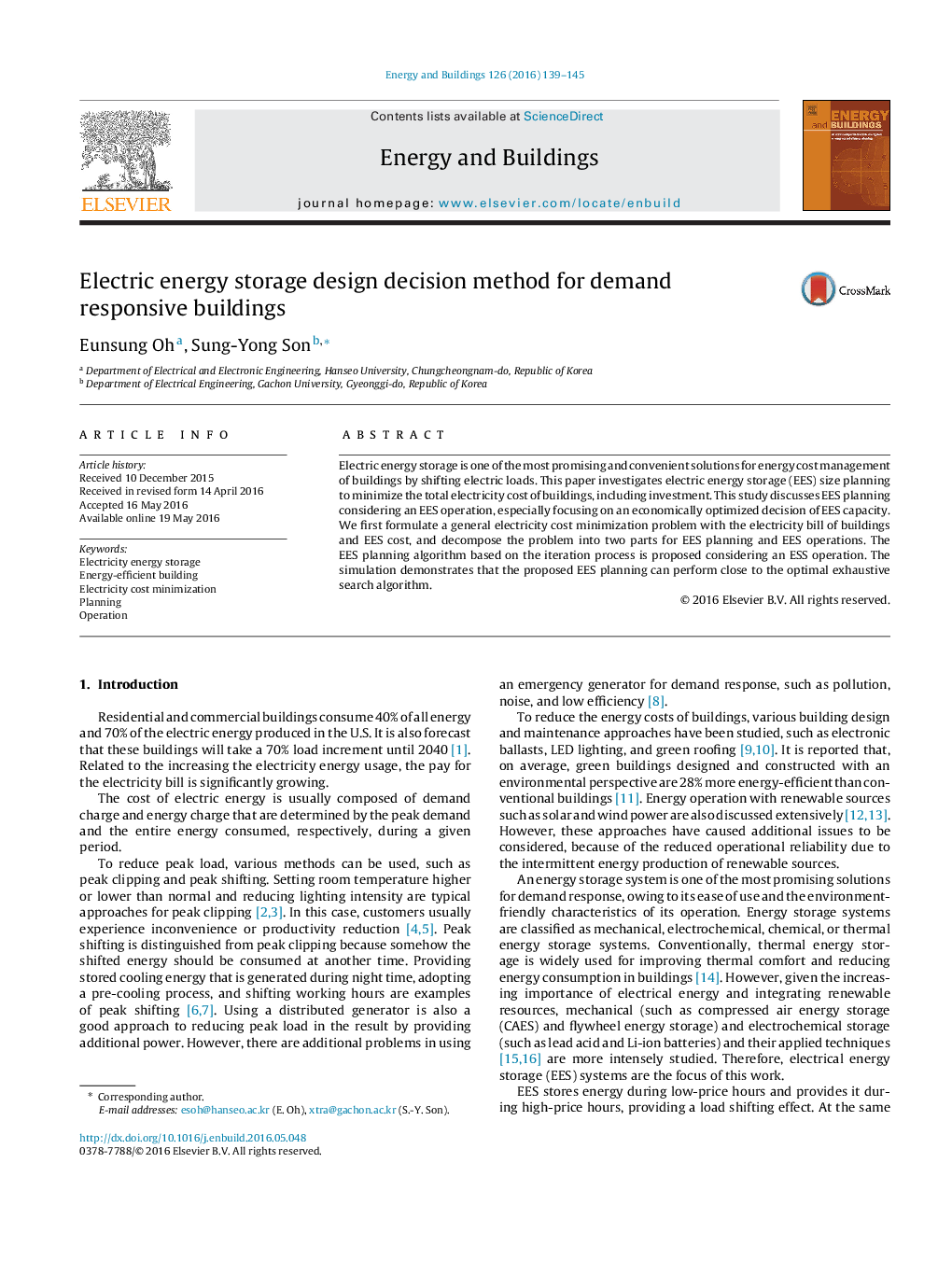| Article ID | Journal | Published Year | Pages | File Type |
|---|---|---|---|---|
| 261922 | Energy and Buildings | 2016 | 7 Pages |
•An EES design method for demand-responsive buildings is proposed.•The method determines the EES size considering the EES operation.•The effects of building demand and EES characteristics are discussed.•The guidance on EES design is suggested for energy-effective buildings.
Electric energy storage is one of the most promising and convenient solutions for energy cost management of buildings by shifting electric loads. This paper investigates electric energy storage (EES) size planning to minimize the total electricity cost of buildings, including investment. This study discusses EES planning considering an EES operation, especially focusing on an economically optimized decision of EES capacity. We first formulate a general electricity cost minimization problem with the electricity bill of buildings and EES cost, and decompose the problem into two parts for EES planning and EES operations. The EES planning algorithm based on the iteration process is proposed considering an ESS operation. The simulation demonstrates that the proposed EES planning can perform close to the optimal exhaustive search algorithm.
